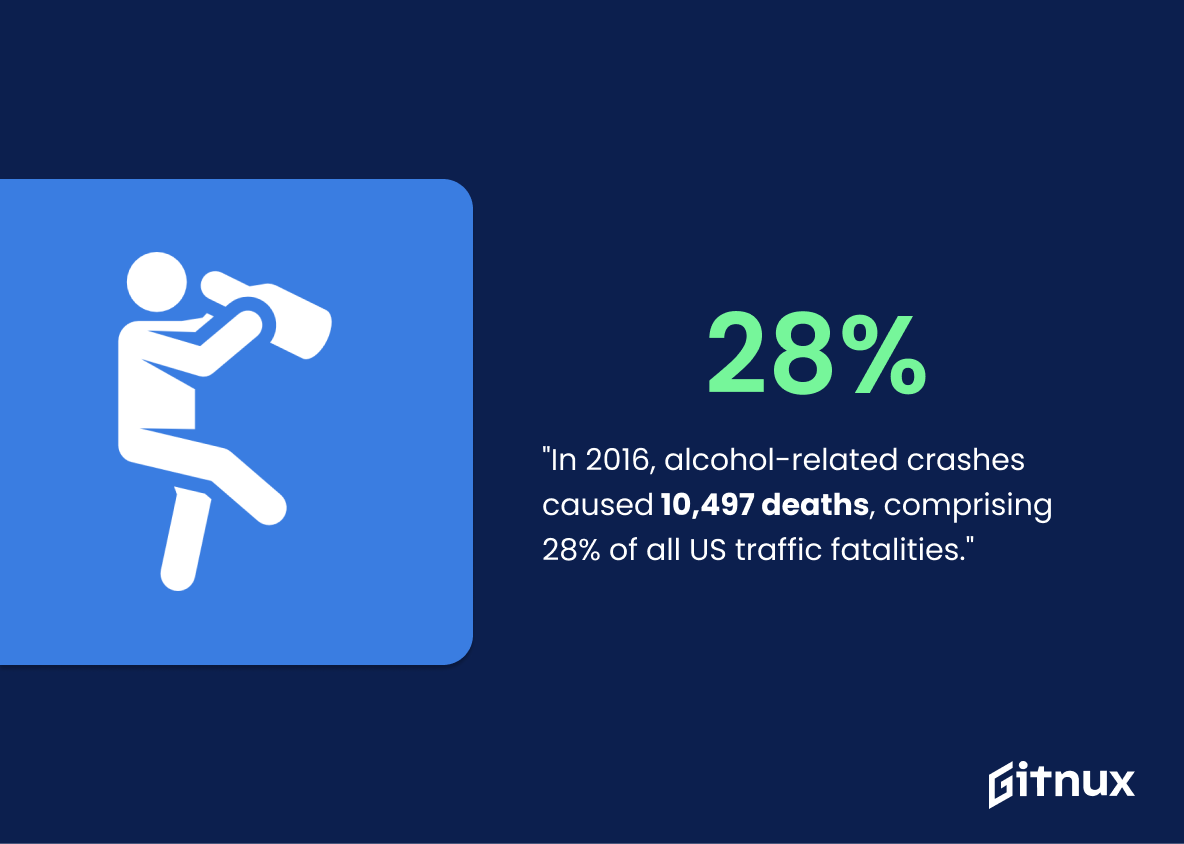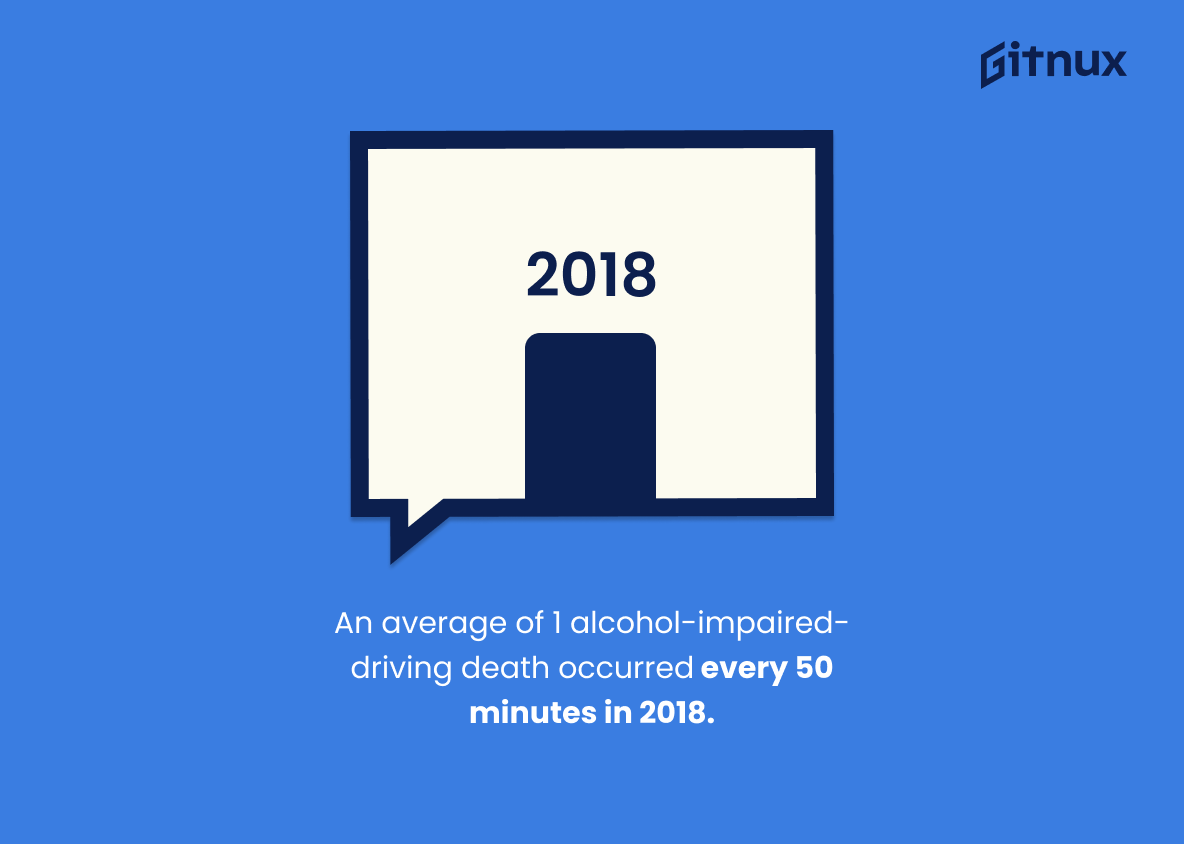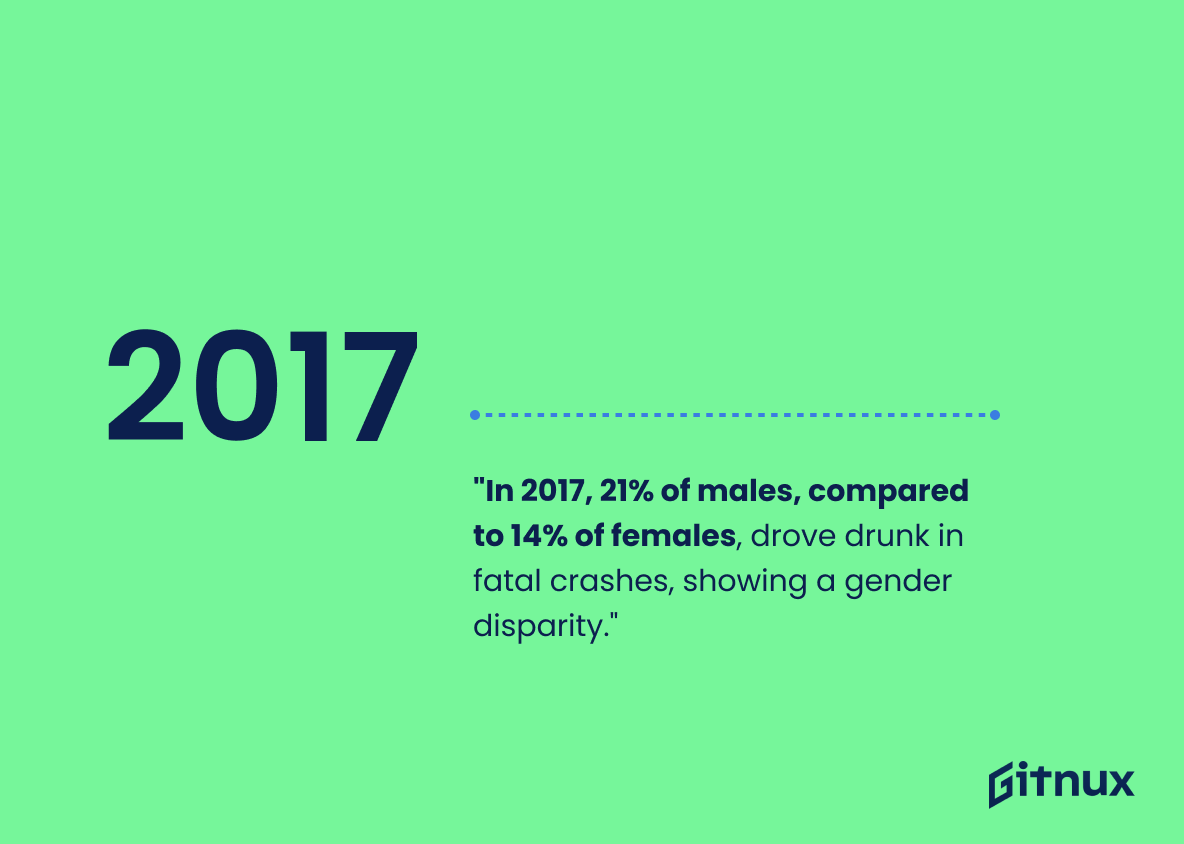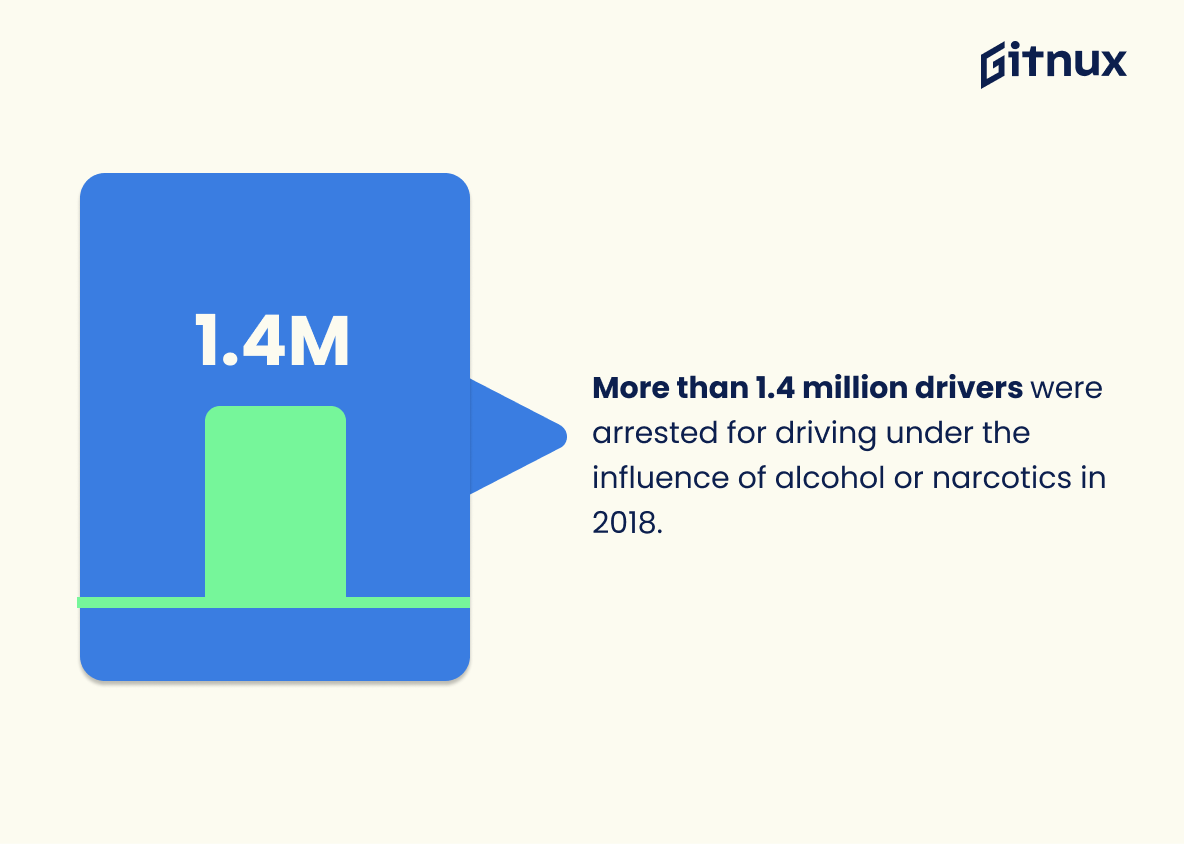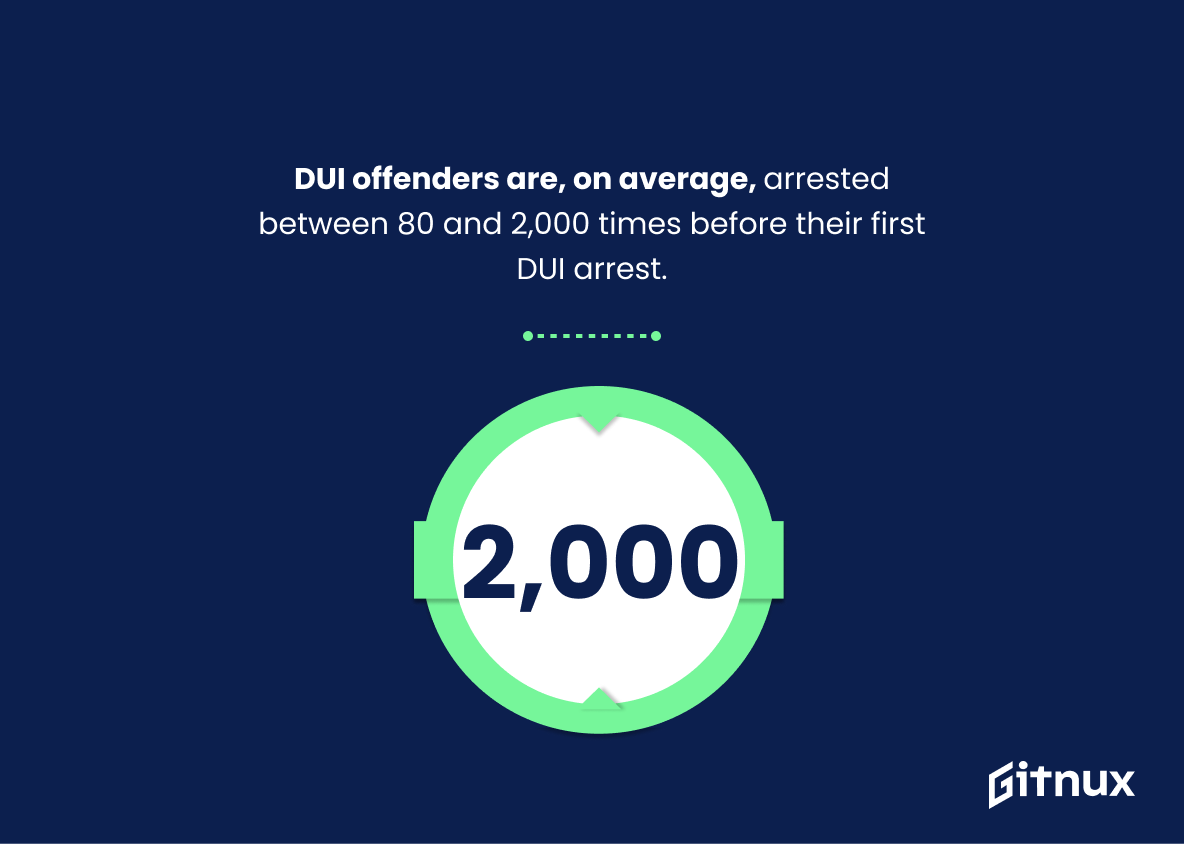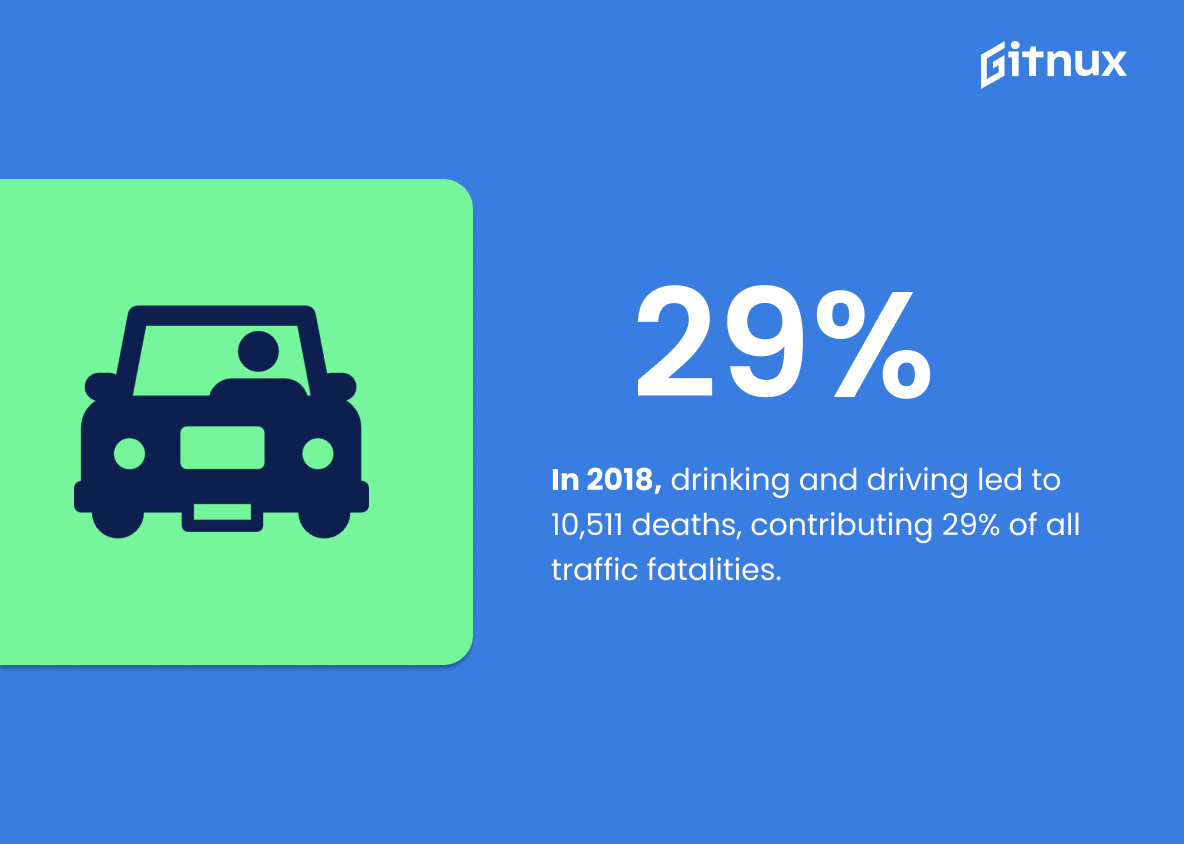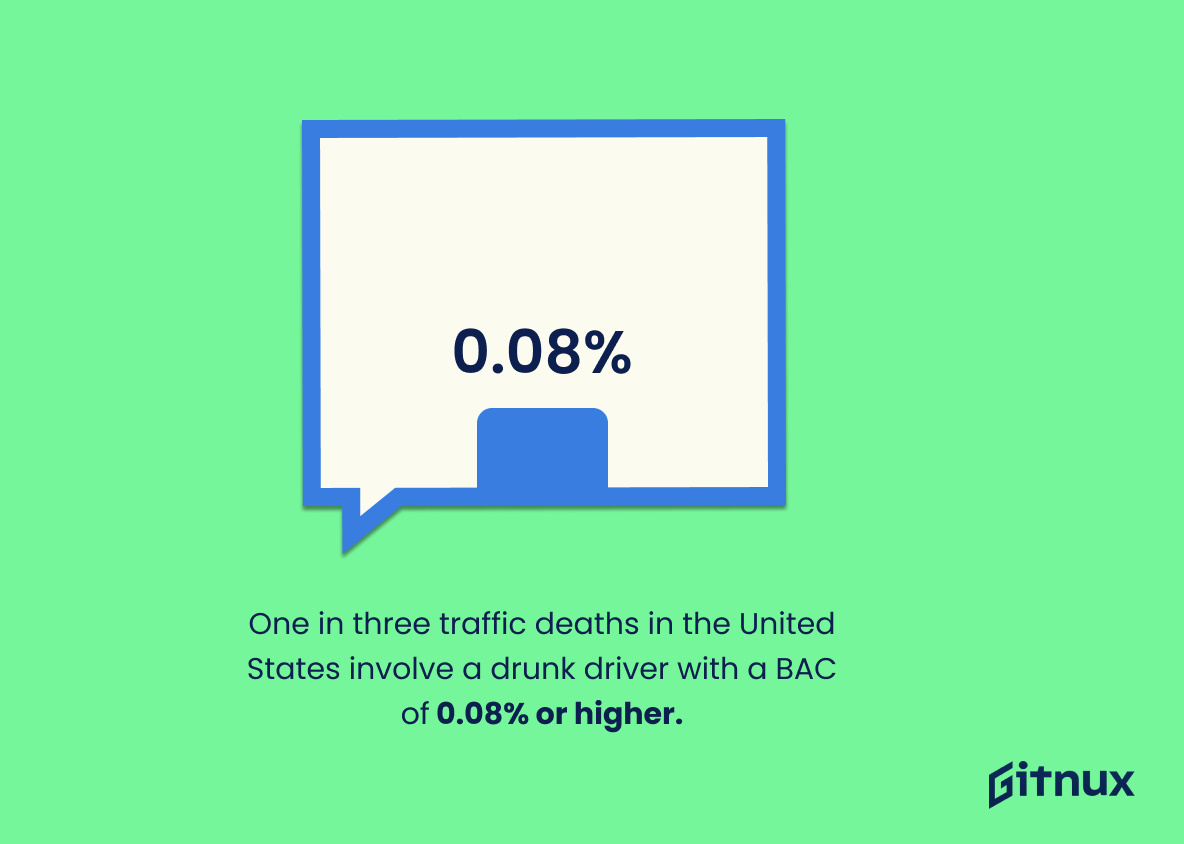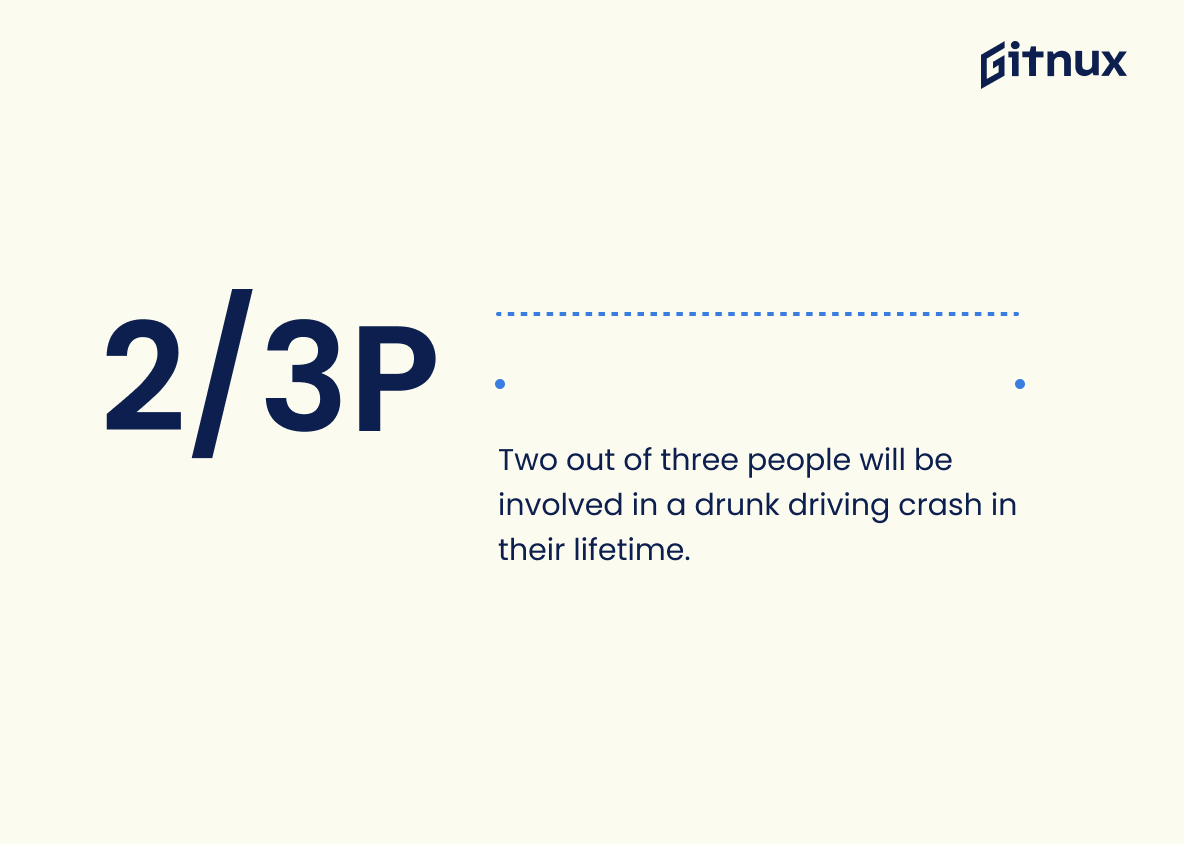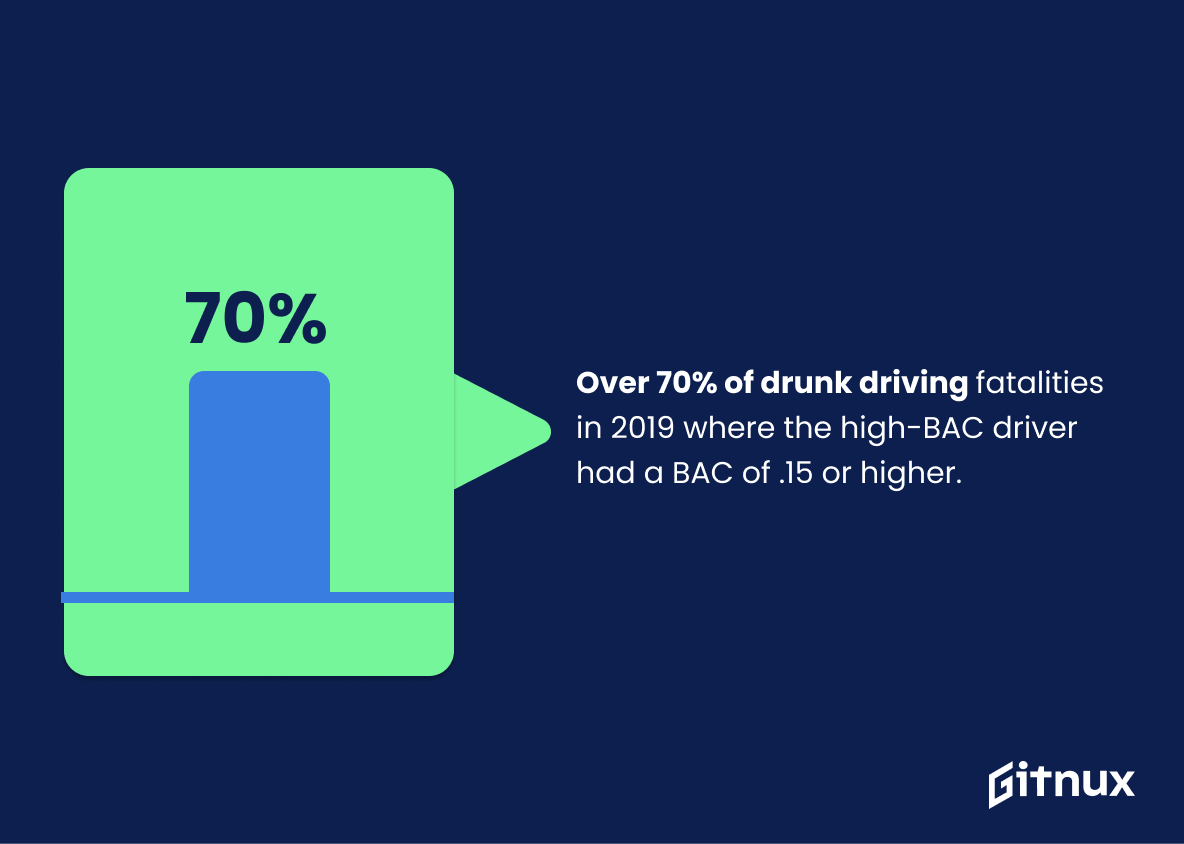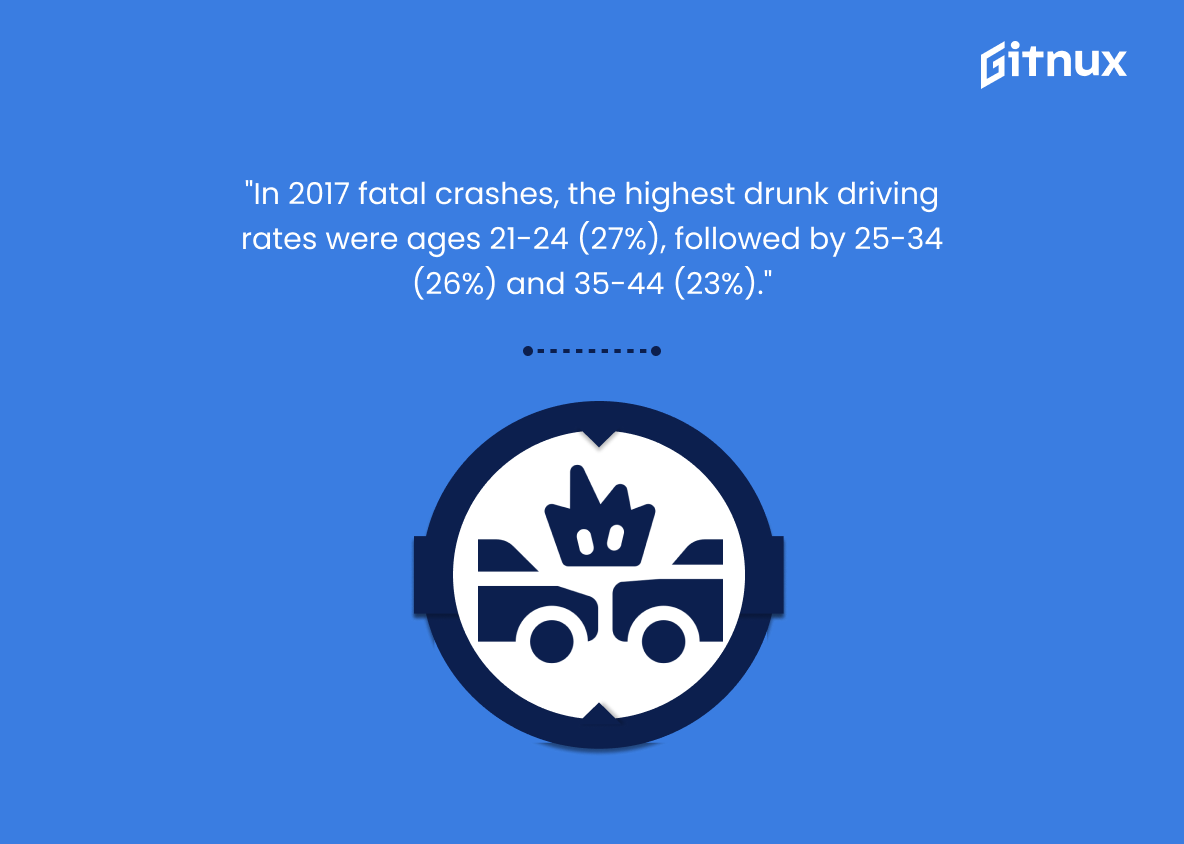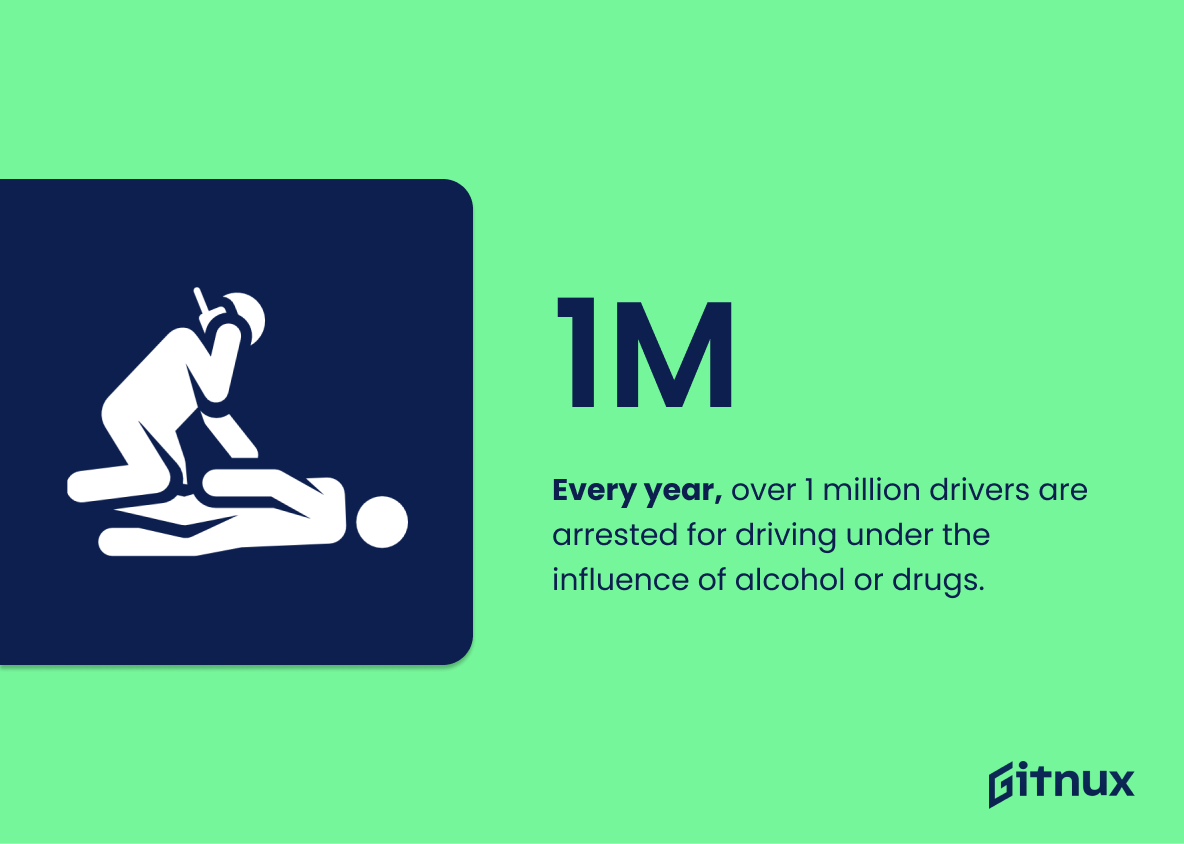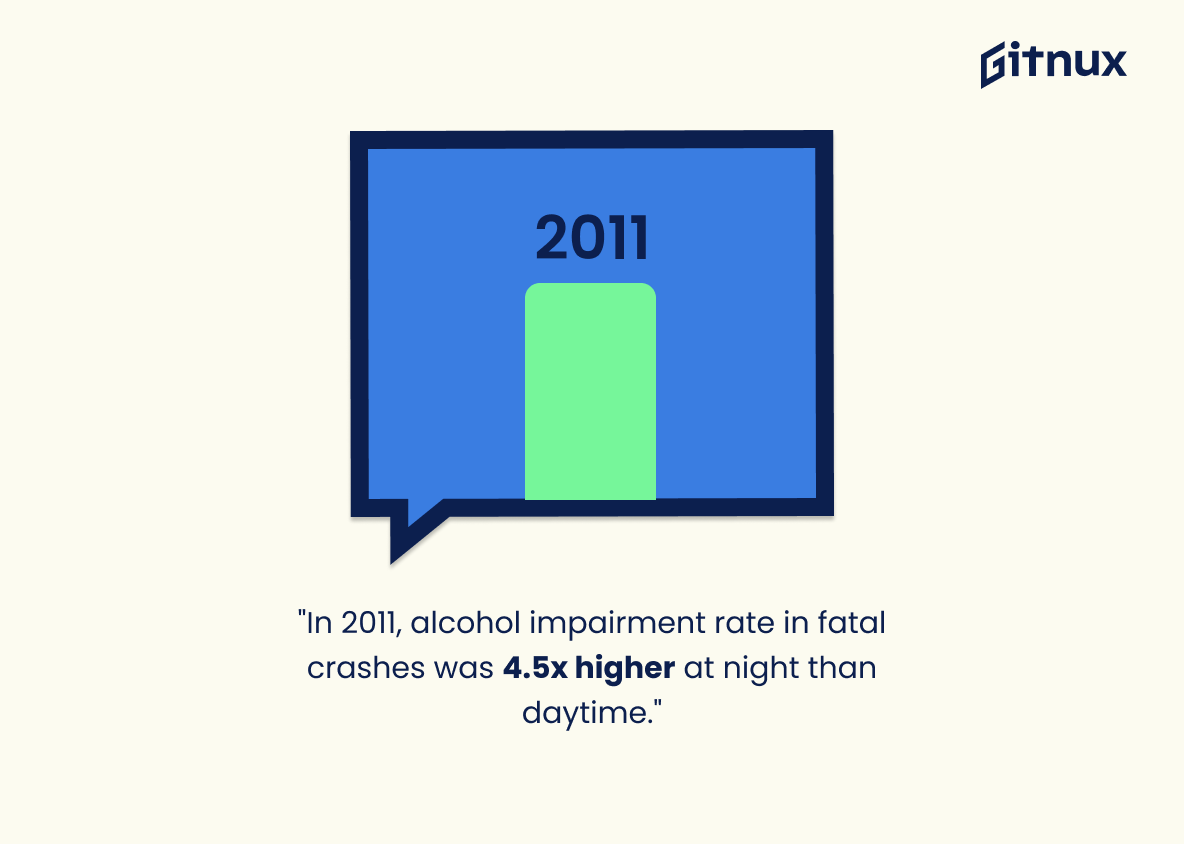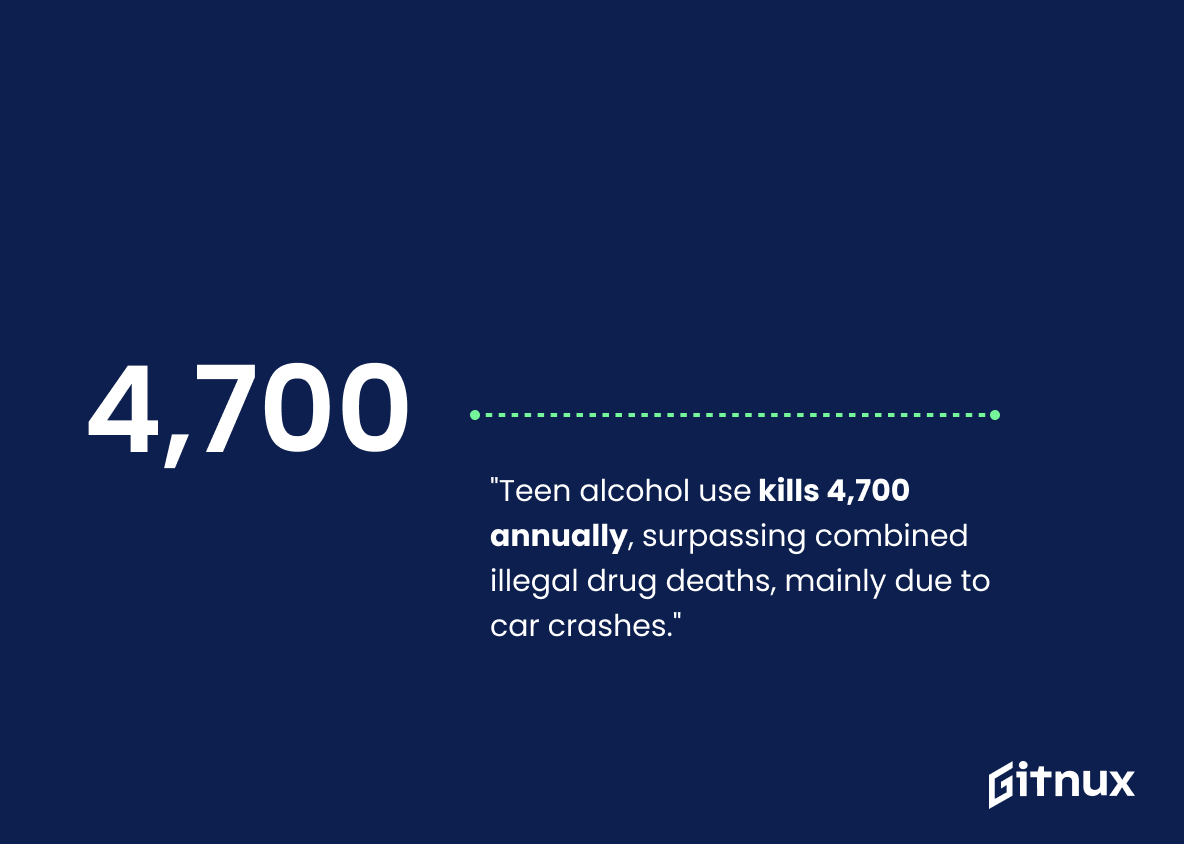It’s an undeniable fact that drinking and driving put countless lives at risk every day. But to really understand the gravity of the problem, it’s essential to delve into the cold, hard numbers. In this blog post, we will unveil some sobering drinking and driving statistics. Illuminating the scale of this public safety issue, we aim to foster awareness, provoke thought, and ultimately contribute towards the worldwide mission of lowering drink-driving incidents. From global figures to local data, follow us on this data-driven exploration that paints a revealing picture of the repercussions of alcohol-impaired driving.
The Latest Drinking And Driving Statistics Unveiled
In 2016, 10,497 people died in alcohol-impaired driving crashes, accounting for 28% of all traffic-related deaths in the United States.
Testing the limits over a couple of drinks might seem harmless, but let’s pull back the curtain of illusion with this shocking figure from 2016. A staggering 10,497 lives were snuffed out prematurely due to alcohol-impaired driving crashes, making up 28% of all traffic-related fatalities recorded in the United States. This grim portrayal amplifies the reality of the dangers associated with drinking and driving beyond mere speculation. It not only underscores the deadly potential of such risky behavior, but also lays bare the immense human cost, making it an urgent call for increased awareness, informed decisions, and effective preventive measures.
An average of 1 alcohol-impaired-driving death occurred every 50 minutes in 2018.
Immerse yourself in this sobering reality: imagine a looming clock, unceasing in its march, ticking away 50 minutes. As the second hand completes its course, shockingly yet with a morbid consistency, a life is snuffed out due to alcohol-impaired driving – a grim reality of 2018. This gruesome statistic serves as a stark reminder of the tragic consequences of mixing alcohol and automobiles, an all-too-common cocktail of destruction, in the narrative of drinking and driving statistics.
This insight plays a pivotal role, dramatically emphasizing the gravity and urgency to combat this public safety issue, acting as a clarion call to take immediate preventative measures. After all, every tick of the clock we delay, lives hang in the balance.
Men are more likely than women to be driving drunk in fatal crashes. In 2017, 21% of males were drunk in these crashes compared to 14% for females.
Grasping the gravity of gender-based drinking and driving trends, as underscored by the chilling figure of 21% of males being drunk in fatal crashes in 2017, versus 14% for females, is akin to unmasking a societal menace lurking in our midst. This confronting disparity can act as a sober wake-up call, illuminating the stark reality of male intoxication being a greater risk factor behind the wheel. Carving out this dark niche in the discourse on drinking and driving statistics, it threads a punitive warning for males and emphasizes the importance of tailored interventions to neutralize this menace.
More than 1.4 million drivers were arrested for driving under the influence of alcohol or narcotics in 2018.
Reflecting upon the startling figure of over 1.4 million drivers who were held accountable for driving under the influence of narcotics or alcohol in a single year, 2018, brings a whole new perspective on the gravity of drinking and driving issue. It serves as a glaring reminder that the danger of impaired driving continues to loom on our roads, not as a rarity, but as a widespread predicament. Picture this – every day, that’s almost 4,000 individuals risking not just their lives, but also those unsuspecting individuals they share the roads with. These numbers transcends the bounds of mere statistics, revealing an alarming narrative about public safety, responsibility, and the dire consequences of substance use. In the realm of drinking and driving statistics, this number screams “urgent attention required”, truly underlining our collective responsibility to promote safer driving practices and stringent policies.
DUI offenders are, on average, arrested between 80 and 2,000 times before their first DUI arrest.
Highlighting this extraordinary statistic paints a vivid picture of the stubborn persistence of drinking and driving behavior. By showcasing this startling loop of multiple arrests before a first DUI, readers get a sense of the stubborn cycle that underlies this issue. This pattern of reoccurring offenses lays bare the dire need for consistent and more effective prevention and rehabilitation measures in dealing with drunk driving. It points to a broader behavioral issue, possibly hinting that offenders repeatedly engage in risky behaviors, long before they face the harsh reality of a DUI arrest. This brings to light the question of whether stricter penalties or earlier interventions could break this cycle and ultimately reduce the prevalence of DUIs.
In 2018, drinking and driving led to 10,511 deaths, contributing 29% of all traffic fatalities.
The glaring reality of the 2018 statistics unveils the terrifying consequence of combining alcohol with steering wheels, painting a chilling tableau of 10,511 lives abruptly, needlessly halted. This brooding specter of death loomed over 29% of all traffic fatalities, a horrifying demonstration of drinking’s destructive potential when mixed with driving. In the narrative of ‘Drinking And Driving Statistics’, these figures scream for attention, demanding objectively a sober examination of the lethal outcomes they represent. They serve as a stark, numerical reminder of the immediate, real-world implications of this life-threatening behaviour, insisting on the desperate urgency for comprehensive policies, effective intervention and continued advocacy against drinking and driving.
Approximately one in three traffic deaths in the United States involve a drunk driver with a BAC of 0.08% or higher.
In the web of drinking and driving statistics, ‘Approximately one in three traffic deaths in the United States involve a drunk driver with a BAC of 0.08% or higher,’ acts as a glaring red signal. This data point becomes particularly noteworthy when considering the deadly link between alcohol consumption and on-road safety. The red flag, one out of three traffic deaths associated with high BAC levels, serves to illuminate the grave, life-or-death consequences drunk driving can have. Hence, it underscores the critical importance of responsible drinking and driving habits, ultimately fostering a stronger impetus for preventative solutions and strategies against alcohol-impaired driving.
Two out of three people will be involved in a drunk driving crash in their lifetime.
This statistic paints a sobering portrait of the dangers looming on our roads due to drunk driving, essentially transforming highways into potential battlefields. It reveals that the likelihood of being entangled in a drunk driving accident isn’t a mere possibility, but almost a certainty for two thirds of people. The chilling reality, distilled from this statistic, necessitates a call to action. It highlights the immense scope of the problem and underscores the urgency for enhanced preventative measures, laws, and awareness campaigns against drunk driving. It’s a stark reminder that behind each statistic is a life potentially cut short or permanently altered, a grim testament of the personal and societal costs of drunk driving.
Over 70% of drunk driving fatalities in 2019 where the high-BAC driver had a BAC of .15 or higher.
Highlighting the statistic that over 70% of drunk driving fatalities in 2019 were by drivers with a BAC of .15 or higher adds a sober punch to any discussion on Drinking and Driving Statistics. It underscores the grave reality of the situation, directly linking high BAC levels to the grim consequences. This number serves to unmask the extreme risk attached to severe intoxication behind the wheel, calling for stricter controls and preventative measures. Furthermore, it intensifies the urgency around public awareness, stressing that it’s not just about being ‘over the legal limit’, but that excessive alcohol consumption can be a lethal cocktail when combined with driving. In a single metric, it encapsulates the profound danger of heavy drinking and driving, making it an essential piece of the puzzle in understanding and combating the issue.
In fatal crashes in 2017, the highest percentage of drunk drivers were ages 21 to 24 (27%), followed by ages 25 to 34 (26%) and 35 to 44 (23%).
Highlighting these age-specific percentages casts a spotlight on the critical issue at hand in our discussion of drinking and driving statistics. The chilling data that in fatal accidents in 2017, the most significant proportion (27%) of intoxicated drivers were within the tender age of 21 to 24 is not just a mere statistic. It is a wakeup call, a neon sign flashing for attention.
It screams out that our young adults, who are just stepping into the prime of their youth, bear the maximum brunt of this deadly mix of alcohol and roads. They are followed closely by those aged 25 to 34 at 26%, and 35 to 44 at 23%. The sharp reality reflected through these numbers prompts us to question the effectiveness of age-related alcohol regulations and education about safe driving.
In essence, these statistics provide compelling evidence of a prevalent problem requiring immediate and effective measures, especially among these age groups. They serve as the cold hard facts demanding our urgent attention for more targeted awareness campaigns, stricter legislation, and efficient implementation to curb drunk driving and its fatal consequences.
Every year, over 1 million drivers are arrested for driving under the influence of alcohol or drugs.
Highlighting the sobering fact that over a million drivers annually face arrest for intoxicated driving underscores the grave reality of this widespread issue. The magnitude of this statistic serves as a chilling wake-up call, echoing the persistent urgency of addressing drinking and driving. On the narrative of a blog post focused on drinking and driving statistics, it not only sets a dramatic tone but also pushes the reader to understand the sheer scale of the problem and the implications of their own choices, societal norms, and law enforcement efforts. Endowed with the power to provoke thought, incite change, and potentially save lives, this figure commands attention and reinforces the blog’s overarching message about the perilous intersection of substance abuse and automotive operation.
The rate of alcohol impairment among drivers involved in fatal crashes in 2011 was 4.5 times higher at night than during the day.
In a multifaceted dialogue on drinking and driving statistics, an intriguing facet emerges. An exploration of figures from 2011 reveals a fascinating, yet distressing trend. Literally, the cloak of darkness seems to draw a haunting picture, with the rate of alcohol impairment in drivers engaged in fatal accidents soaring to a staggering 4.5 times higher at night compared to daytime. This startling statistic unmistakably underscores the extent of the problem, underlining the pressing need for robust interventions and evoking a prophetic warning about the potential repercussions of mixing the nightlife’s allure with alcohol-immediate intervention. This unequivocally amplifies the emphasis of this blog post on the severity and urgency of adopting effective measures to prevent alcohol-impaired driving.
Teen alcohol use kills 4,700 people each year, more than all illegal drugs combined, the most common cause being motor vehicle crashes.
When we expose the sobering reality captured in the number ‘4,700’ – representing individuals who perished prematurely each year due to teen alcohol use, the gravity of teenage drinking and driving becomes starkly evident. These casualties even exceed the deadly toll of all combined illegal drugs, underscoring the severity and prevalence of teen drinking. Notably, the leading culprit behind these fatalities is motor vehicle crashes, bringing into sharp focus the undeniable link between alcohol consumption and impaired driving. In the landscape of drinking and driving statistics, this fact serves as a shocking wake-up call, urging readers to understand the devastating consequences, especially for our younger generation, and to promote responsible behavior behind the wheel.
Conclusion
The grim reality of drinking and driving statistics underscores the severity and prevalence of this issue. It illustrates the profound, life-altering consequences that can arise from reckless, irresponsible actions. While the numbers are devastatingly high, they also motivate us to continue educating about, legislating against, and enforcing penalties for drunk driving. Every single life saved from such avoidable tragedies is a victory. As we move forward, we must focus on cultivating personal responsibility, increasing public awareness, and harnessing technology to create effective deterrents and solutions. After all, in the battle against drunk driving, success is measured in lives saved, injuries prevented, and futures preserved.
References
0. – https://www.responsibility.org
1. – https://www.www.iii.org
2. – https://www.teens.drugabuse.gov
3. – https://www.www.cdc.gov
4. – https://www.www.madd.org
5. – https://www.bactrack.com
6. – https://www.www.drugabuse.gov
7. – https://www.apadivisions.org
8. – https://www.www.nhtsa.gov
9. – https://www.www.iihs.org
10. – https://www.www.motorists.org
